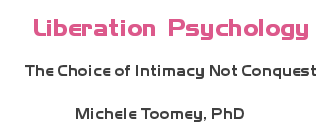|
Sounds dull, perhaps simple, but the process of lining things up is essential for rhythm, well being, intimacy, and for liberation. Out of line, things get chaotic, misinterpreted, difficult, painful, just plain off. And off is anything but on.
When things are lined up and we are on, we are able to be creative, be at one and therefore, be in sync with a lilt not a drag. Energy is generated by being lined up. The flow is not interfered with and the smoothness opens the door to intimacy. Once flowing smoothly, attention is free to be directed at what's happening and what we're feeling. Things flow in and out, feelings, thoughts, memories, ideas. There is a sense of spirituality when things are lined up, because there are no boxes, no barriers, just the freedom to ebb and flow. How to engage in the process of lining things up is our next assignment. Ponder this exposure to it and we will continue.
In order to line things up we must bring the right orientation. What does that mean? It means that we are approaching the idea or the task with openness and inquiry. This orientation frees us up to find the way to enter or leave or participate in whatever it is, with accord not discord. That is being lined up.
If we are uncertain or afraid, we need to be open to those feelings and inquire why and how we can best deal with them. This is part of the lining up process, also. By attending to where we are and what we bring, we are lining ourselves up to make the next move with rhythm and a sense of well being.
To engage in this process we must be oriented toward integrity and openness and inquiry at every moment. It's not a one-time act, it is a way of life.
|



